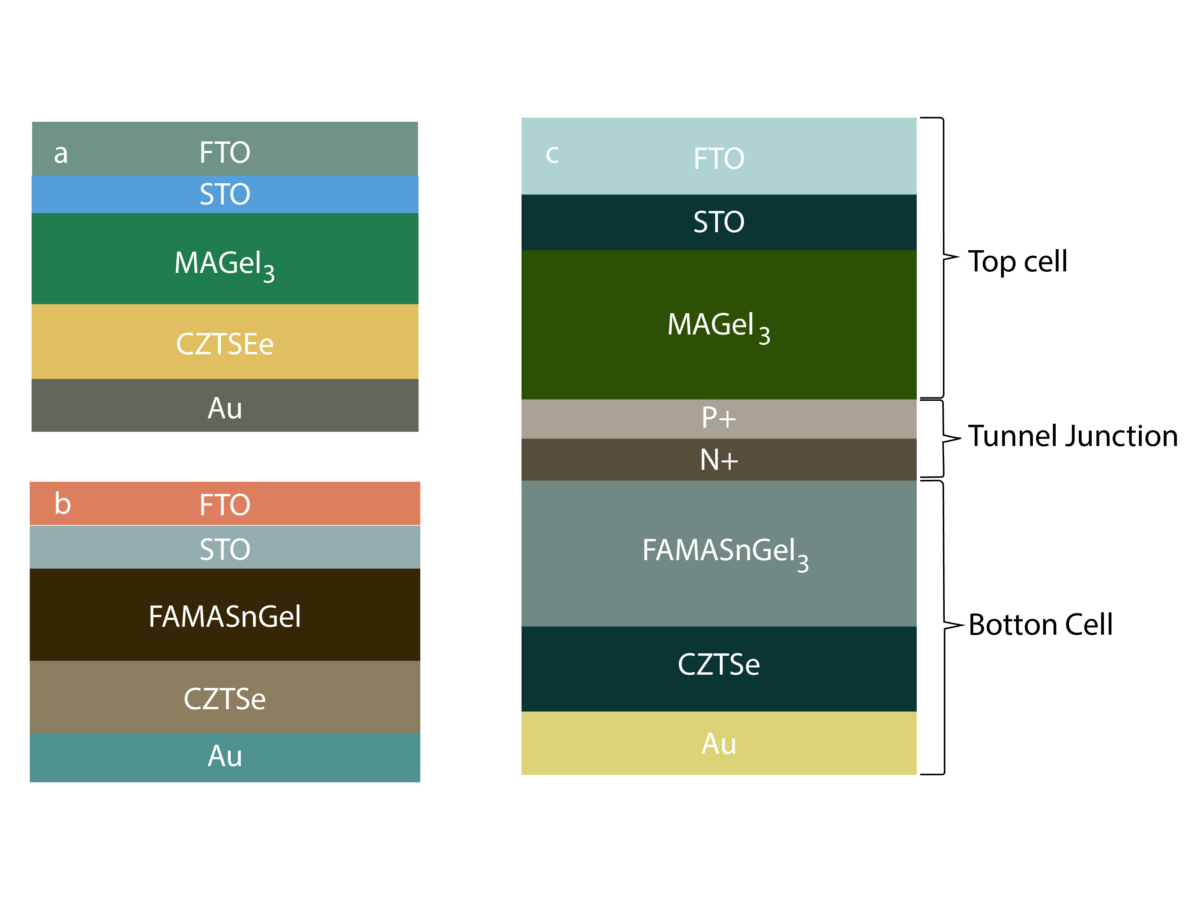An international group of researchers has designed a tandem perovskite-perovskite solar cell that integrates a hole transport layer (HTL) made of kesterite (CZTSe).
Kesterite is one of the most promising light absorber material candidates for potential use in lower-cost thin-film solar cells. Kesterites include common elements such as copper, tin, zinc, and selenium. Unlike CIGS compounds, there are no supply bottlenecks expected in the future. However, kesterite is still less efficient than CIGS in mass production. The world record for such cells is 12.6%, achieved for large-area devices by Japanese thin-film producer Solar Frontier in 2013.
“Copper-based materials offer excellent chemical stability, conductivity, and hole transport mobility, making them ideal for HTLs in perovskite devices,” the scientists said. “Furthermore, CZTSe is earth-abundant, non-toxic, inorganic, and eco-friendly, with a high absorption coefficient of around 104 cm−1, an optimized direct energy band gap of 0.95 eV, and outstanding stability.”
The scientists used the SCAPS-1D solar cell capacitance software, developed by the University of Ghent, to simulate the novel cell configuration. For the top cell, they assumed the use of a wide bandgap perovskite material known as MAGeI3, while for the bottom device they considered a narrow bandgap perovskite known as FAMASnGeI3. Both materials are lead-free mixed cation perovskites.
The simulated tandem device was built with a substrate made of fluorine-doped tin oxide (FTO), an electron transport layer (ETL) based on strontium titanate (STO), the MAGeI3 absorber, a tunnel junction, the FAMASnGeI3 absorber, the CZTSe HTL, and a gold (Au) metal contact. The ideal thickness of the MAGeI3 and FAMASnGeI3 absorbers was found to be 450 nm and 400 nm, respectively. That of the tunnel junction was 4 nm.
Popular content
The simulation showed that the tandem device has the potential to achieve a power conversion efficiency of 23.32 %, an open-circuit voltage of 0.970 V, a short-circuit density of 28.46 mAcm−2, and a fill factor of 84.43 %.
“It was observed that the cell efficiency depends on the tunnel junction's thickness and the front contact work function selection,” the academics stated. “Therefore, it can be determined that the Pb-free mixed cation perovskite/CZTSe tandem device performs better than the single junction device.”
The novel cell concept can be found in the study “Enhancing Solar Cell Efficiency through Tandem Structures Utilizing Lead-Free Mixed Cation Perovskites and CZTSe Absorber Layers,” published in Chemical Physics Impact. The research team included scientists from the Princess Nourah bint Abdulrahman University, Al-Baha University, and Taibah University in Saudi Arabia, as well as Pakistan's University Faisalabad and theUniversity of Punjab. It also comprised academics from Italy's Astronomy Ettore Majorana University of Catania.
This content is protected by copyright and may not be reused. If you want to cooperate with us and would like to reuse some of our content, please contact: editors@pv-magazine.com.



By submitting this form you agree to pv magazine using your data for the purposes of publishing your comment.
Your personal data will only be disclosed or otherwise transmitted to third parties for the purposes of spam filtering or if this is necessary for technical maintenance of the website. Any other transfer to third parties will not take place unless this is justified on the basis of applicable data protection regulations or if pv magazine is legally obliged to do so.
You may revoke this consent at any time with effect for the future, in which case your personal data will be deleted immediately. Otherwise, your data will be deleted if pv magazine has processed your request or the purpose of data storage is fulfilled.
Further information on data privacy can be found in our Data Protection Policy.